Recent Commercial Posts
Do I Need Fire Insurance For My Building?
10/16/2022 (Permalink)
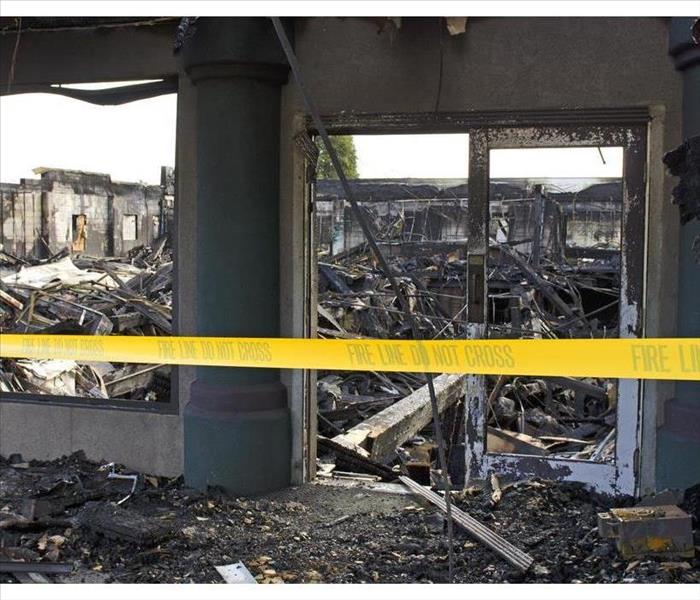 If your business is located in an area with high fire risk, you should consider purchasing fire insurance.
If your business is located in an area with high fire risk, you should consider purchasing fire insurance.
Protecting Your Business Against Fires
You may not think about fire insurance, but it's important for your business. Fires can cause significant damage to a building and pose a risk to the safety of your employees and customers. While you have many options when it comes to protecting your business against fires, one of the most basic choices is whether or not you should get fire insurance coverage. The answer depends on several factors including how old your building is, where it's located and what kind of business you operate. In this article, we'll look at some common questions about fire insurance so that you can make an informed decision about whether or not this type of coverage makes sense for your situation.
Fires Destroy More Than Just Things
Fires can be devastating. Not only do they destroy valuables, but they also have the power to consume or destroy all a business's hard work and investment. If your business is located in an area with high fire risk, you should consider purchasing fire insurance.
The cost of rebuilding is one important factor to consider when deciding whether or not to purchase fire insurance. The amount of money it will take to rebuild your building depends on many factors including what type of structure you had before, how much damage there was during the fire, and whether or not there were any injuries sustained as a result of said fire.
Sometimes Fire Insurance is Required
Fire insurance is not required by law, but it's a good idea for many businesses. If your business is financing its building or leasing it to tenants, the bank might require fire insurance as a condition of its loan.
Fire Insurance Coverage
Fire insurance can help protect your business from the financial impact of both property and business interruption losses. Property insurance will cover the value of goods damaged or destroyed in a fire, and business interruption insurance will pay for lost income if you are forced to close down temporarily due to a catastrophic event such as a fire. Both types of coverage can be purchased separately or together, depending on your needs and budget.
In addition to protecting your building and its contents, fire insurance can also cover computer equipment that may be damaged by smoke inhalation or water seepage into electrical equipment during an emergency response effort by firefighters.
Fire insurance can help protect your investment and save money in the event of an unexpected fire in the future. It’s a good idea for any business, but it is especially important for businesses that have inventory or equipment. A fire can be devastating to these types of businesses and significantly impact their ability to operate. If you suffer damage from a fire, your insurance policy will pay for repairs or replacement costs up to the limits listed on your policy.
Fire insurance is a great way to protect your business and investment, even while you are away from your building. There are many other types of insurance and property policies that can help protect against fire, so it's important to talk with an insurance agent before deciding on which policy works best.
When your Baton Rouge business catches on fire, Give SERVPRO of Lafayette a call!
Ways To Save Water in Your Commercial Building
7/30/2022 (Permalink)
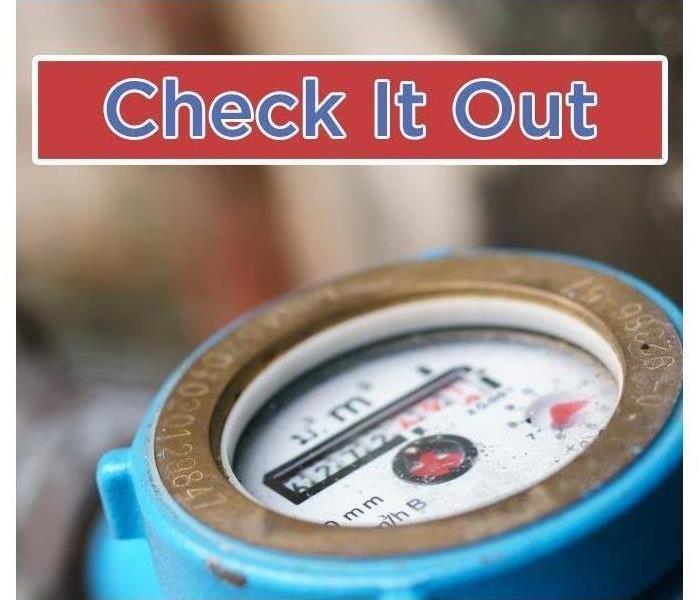 Monitoring your water meter is the best way to catch a troublesome area.
Monitoring your water meter is the best way to catch a troublesome area.
Methods for Conserving Water in Commercial Buildings
Owning a commercial property comes with a lot of expenses, and many of them aren't completely under your control. Unless everyone who works in your building in Lafayette, LA is committed to water conservation, your utility bill may be higher than you expect. You can still take some steps, however, to address water issues and reduce the overall amount used.
Energy Efficient Appliances
Start by simply choosing appliances that require less water usage. Check the energy rating on several appliances in your break room and throughout the building:
- Refrigerator
- Dishwasher
- Water fountain
When you look for ways to reduce consumption at the source, you can lower your usage overall.
Touch-Free Upgrades
The public restroom is probably your number one culprit for water waste. You may have lost count of the number of times you have walked in to discover that a faucet has been left on or a toilet is still running. The cost of touch-free options or another water upgrade may seem daunting at first, but they are likely to pay for themselves within months by helping you overcome the water issues that lead to high utility bills.
Meter Monitoring
You should always know how much water you are using in your building. Monitoring your water meter is the best way to catch a troublesome area. It's also a good idea to keep your outside irrigation and your internal water usage on separate meters so that you can more easily identify where the waste is coming from.
Quick Mitigation
If you discover that your meter is running higher than usual, this could be an indication that you have a leak somewhere. Call your plumber to fix the problem and contact water damage specialists to mitigate any issues caused by the leak.
Keeping track of your building's water issues is only one way to lower your utility bill. By employing multiple strategies, you can reduce your water usage and cost.
3 Steps To Prepare To Use a Fire Extinguisher
5/25/2022 (Permalink)
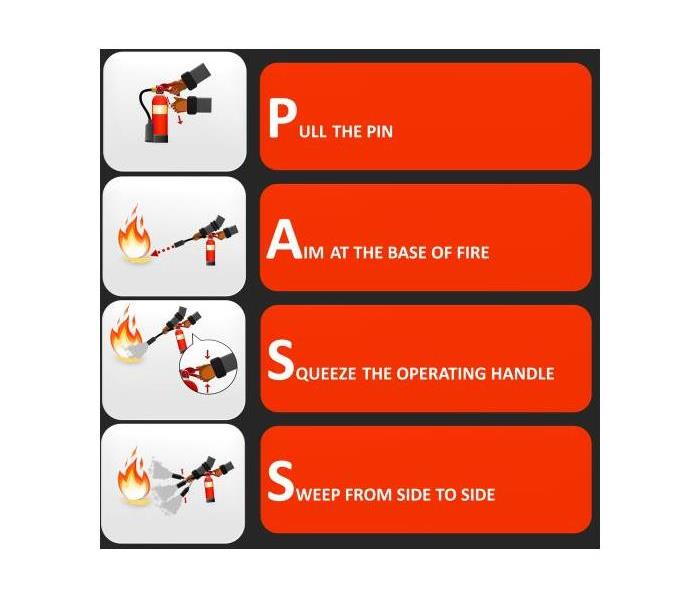 The acronym PASS stands for Pull, Aim, Squeeze and Sweep.
The acronym PASS stands for Pull, Aim, Squeeze and Sweep.
Three Steps To Prepare To Use a Fire Extinguisher
Extinguishers for fire are essential safety equipment, but many people are not sure how to use these tools when the flames are rising. Here are three steps that an employee delegated fire safety responsibilities or a manager of a commercial property can take to prepare to effectively use a fire extinguisher at a building in Lafayette, LA.
1. Check the Class of Extinguisher
There are five main extinguisher classes: A, B, C, D and K. Class A extinguishers are best for combustible solid materials. Class B extinguishers are formulated for flammable liquids and gasses. Use Class C extinguishers for electrical fires, Class D extinguishers for metallic fires and Class K extinguishers for cooking fires.
2. Check the Fire Extinguisher Date
An extinguisher must be functional in order to limit the need for fire damage restoration. Check the label or cylinder body of the canister for a date. The plastic ring or boot of an extinguisher can cover the date. Based on the date, it may be necessary to refill or replace the extinguisher.
3. Memorize the PASS Method
The acronym PASS stands for Pull, Aim, Squeeze and Sweep. Suppress a fire by pulling the extinguisher pin, aiming the nozzle at the base of the fire, squeezing the lever and sweeping the fire suppressant spray from side to side. The spray from an extinguisher can spread a kitchen fire involving grease. Smother a grease fire with a heat-resistant pot lid or powder suppressants such as baking soda and salt.
You should always use a fire extinguisher as intended. Set yourself up for success beforehand by checking to make sure that the fire suppressants in an extinguisher are rated for efficacy at putting out the substances that are most likely to ignite in each area of a commercial building in Lafayette, LA.
Mold: Fascinating Facts
4/18/2022 (Permalink)
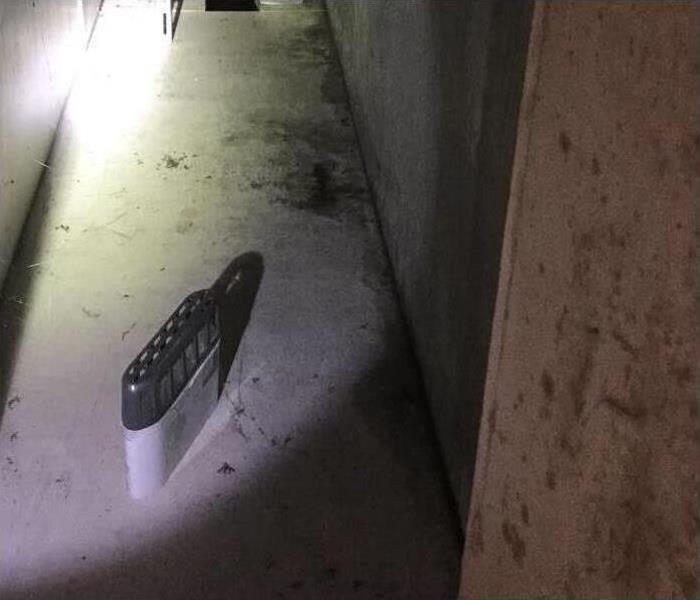 Small moisture problems become big mold problems.
Small moisture problems become big mold problems.
Mold Information
When studied from afar, mold, a type of fungus, is a fascinating organism. When experienced up close in your place of business in Lafayette, LA, black mold and other varieties are more disturbing than anything else. To start with the interesting facets of mold, it is found just about everywhere. It can even be found in desert climates. More than likely, it is in your building at all times without causing any problems. It needs water to grow and proliferate into bothersome colonies. A moisture source such as high humidity in a room, a steady water leak or standing water is often enough to foster a fungal outbreak.
Mold Damage
Another interesting trait of black mold is that it forms roots and penetrates into porous materials. A mold outbreak brings a number of unpleasant consequences:
- An ugly, slimy appearance
- Musty odors
- Poor indoor air quality
- Extensive damage to a property
Mold can break down wood and paper materials as well as penetrate into furniture, clothing and carpeting. A mold cleanup is needed when the colonies are causing any of these negative problems. Allowing the mold to grow unchecked will result in the spread of mold throughout your building. This will significantly complicate the restoration of your property.
Mold Remediation
The removal of mold from a property cannot be done with regular cleaning methods. Special techniques and equipment are needed as well as the expertise of an experienced mold mitigation company. A SERVPRO franchise is always Here to Help. Certified technicians will use thermal imaging to locate a water source in your building. These highly-trained workers will employ containment barriers to stop the spread, and they will use vacuums to suck up mold spores killed by effective fungicides. A professional cleaning will ensure that the mold won't return again. Whether your building has black mold or another variety of mold, a proven process will rid your property of this fascinating but harmful organism.
Tips for Commercial Roof Upkeep
2/23/2022 (Permalink)
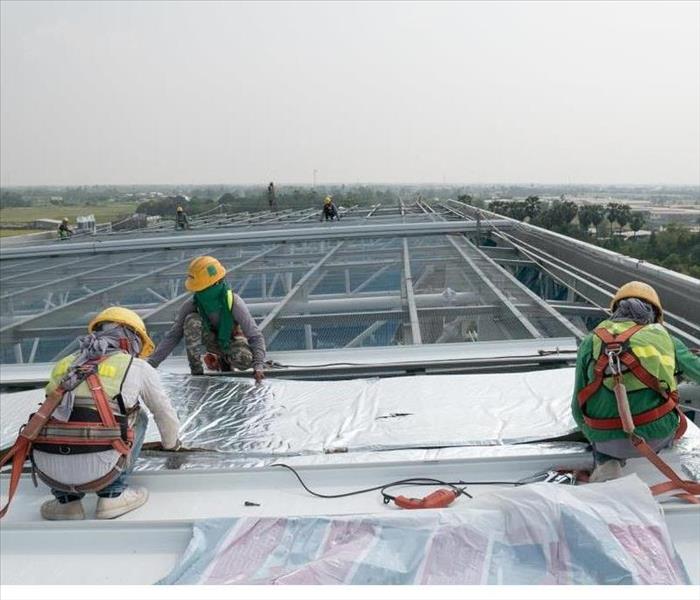 Keeping your gutters and storm drains clear ensures your roof drains any runoff properly.
Keeping your gutters and storm drains clear ensures your roof drains any runoff properly.
Commercial Roof Maintenance Suggestions
You rely on your roof to protect your business, but your roof relies on you to protect it from the hazards of the elements in Lafayette, LA, with proper commercial roof upkeep, maintenance, and repair. You can spring a roof leak just from weathering over time, or from wind damage. Here are just a few tips to keep your roof watertight, intact, and ready to stand up to anything:
- Create a repair plan. Your first step in roof upkeep is to have a repair plan before the first roof leak happens. Don’t get caught off guard. Ensure you have the numbers for your insurance company and repair technicians on hand, and have any materials needed in place to implement a temporary leak stopper until professionals can repair it.
- Inspect after major weather events. Hailstorms, thunderstorms, hurricanes, and windstorms are your most likely culprits for weather damage, but even earthquakes can cause cracks or lost shingles on your roof. After events, conduct a thorough inspection of your rooftops.
- Clean your gutters and storm drains. Keeping your gutters and storm drains clear ensures your roof drains any runoff properly. Without proper drainage, standing water can easily cause long-term damage to your roof.
- Keep trees and other foliage clear. Not only can falling branches damage your roof and cause a roof leak, but branches and vines lashed in the wind can rip off sections of your roof or cause abrasive damage. Avoid this by trimming all foliage and trees to a clearance of a certain distance around your building’s roof.
- Inspect indoors for any tell-tale signs. Sometimes, leaks may not be readily apparent from an outside inspection. Dark spots and water spots on the ceiling, as well as problems with interior systems, may be your warning signs. Conduct periodic inspections to identify any issues early on.
Prevent a problem before it happens by taking proper care of your roof. You can also contract professionals to help check for wind damage and to weatherproof your roof to prevent future costly mishaps.
A Quick Guide to Commercial Storm Insurance
2/3/2022 (Permalink)
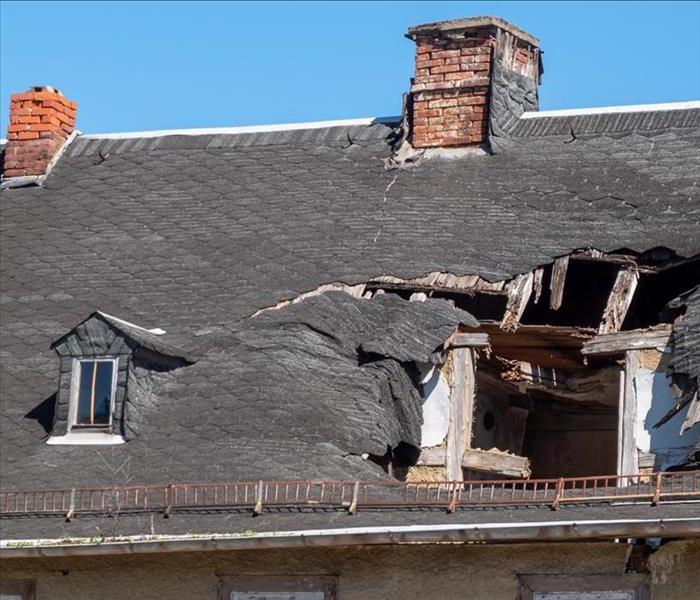 Severe winds can cause damage to your property.
Severe winds can cause damage to your property.
As a business owner in Lafayette, LA, insuring your property is a no-brainer. However, not all people know specifically how storm insurance works or what it covers. Here are some brief tips to help you understand this often-misunderstood type of insurance coverage.
Categories of Coverage
Not all storms, or deductibles, are created equal. The best way to understand your specific coverage is to read your commercial insurance policy or speak with the agent. Generally, insurance policies reference these three categories:
• Windstorm – This includes any damage to the property resulting from wind or hail that does not fall into one of the other categories.
• Hurricane – The definition of a hurricane differs by state and storm insurance company. Some define it by wind speed; others consider the amount of time between the National Weather Service (NWS) announcement and the time of the damage.
• Named Storm – When a tropical storm is severe and widespread, the NWS names it. For some insurance coverage, this may fall into the hurricane category.
Differences in Deductibles
When you first buy property insurance, you consider your deductible. This is the amount of money that you, the business owner, must pay out of pocket prior to receiving insurance funds. When the damage is the result of a natural disaster, however, people are often surprised that the same deductible does not apply. Instead of a standard amount of money, coverage is a percentage of the total cost for storm restoration professionals to mitigate and repair the damage. A typical rate is between one and five percent.
Whether severe winds in Lafayette, LA, knocks a tree into your commercial building or a hurricane causes significant destruction, understanding storm insurance is critical to getting your business up and running again. When the unexpected happens, take comfort in the notion that your insurance agent and local restoration company are Here to Help.
 If your business is located in an area with high fire risk, you should consider purchasing fire insurance.
If your business is located in an area with high fire risk, you should consider purchasing fire insurance.





 24/7 Emergency Service
24/7 Emergency Service




